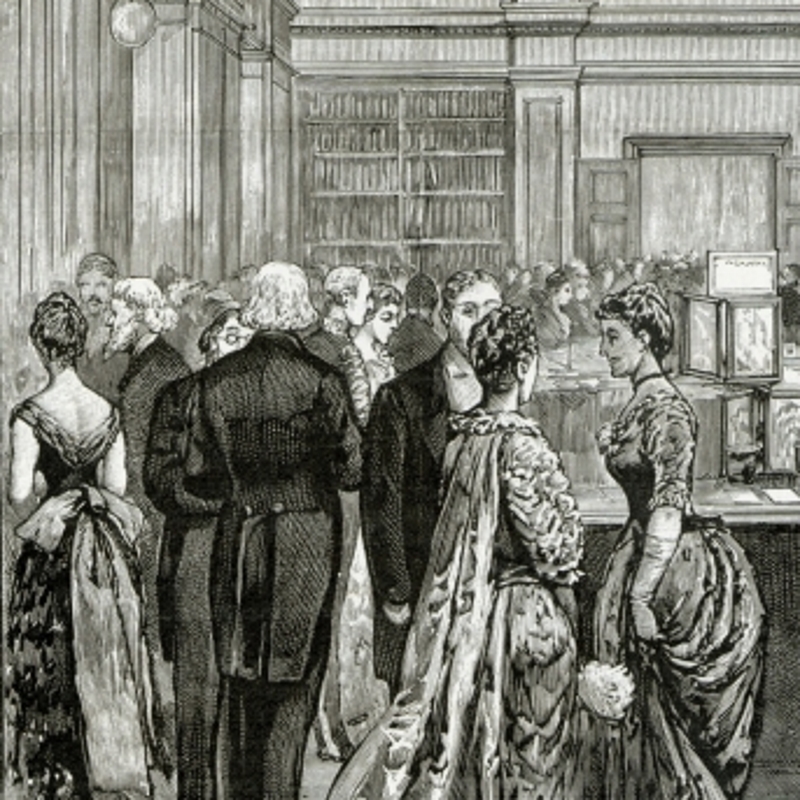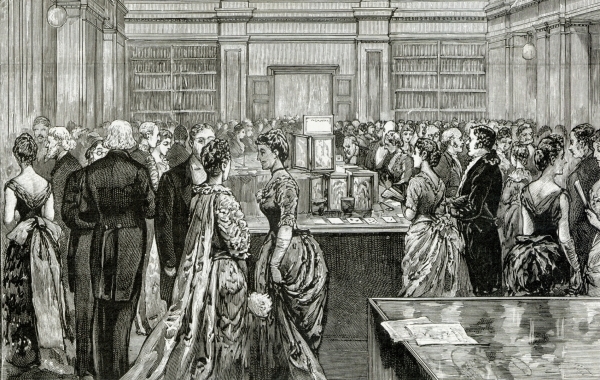A look at some of the women who exhibited their scientific research at the Royal Society in the nineteenth century.

To celebrate International Women’s Day, I thought it might be interesting to share the scientific contributions of a few women who exhibited their work in a Victorian, male-dominated setting.
The Royal Society has a long tradition of featuring scientific findings at its Soirées, also known as Conversazioni. Originally, these were funded personally by the President of the Royal Society and held at the President’s home. However, in 1871 the Soirée Committee was formed and given a small stipend to plan these popular events, which included wine, ices, and musical entertainment. Between 1871 and 1876, the annual Soirée was a male-only event, although early programmes show that two women exhibited their work during this time period.
On 27 April 1872, the photographs of Miss Stokes, a series of 54 images of early Christian architecture found in Ireland, were presented by J H Lamprey, secretary of the London Ethnographical Society. Margaret Stokes (1832-1900) was a renowned archaeologist and antiquarian, well known for her exquisite illustrations of early Irish artifacts. In 1876 she became an honorary member of the Royal Irish Academy. The fact that her large collection of photographs was deemed worthy of exhibition in the Royal Society’s principal library at Burlington House confirms her respected position in the Society.
Another early contributor was Marianne North (1830-1890), a naturalist who painted flora from all over the world. She was unique in that she often travelled unaccompanied to remote locations. After the death of her mother in 1855, North began travelling with her father, and in 1869 resolved to become a painter of flora. In 1871 she began an extensive journey to the Americas, and at one point lived in an isolated hut in the jungles of Brazil. Marianne North’s paintings from her travels were a fixture at the Royal Society’s Conversazioni from 1874 to 1886. These included rare images of plant life from Asia, India, the Americas and the Caribbean. At a time when preservation was difficult and photography limited, her robust and colorful paintings depicted both beauty and scientific accuracy. The Standard wrote, after her first exhibit at the Royal Society, that North’s paintings 'were regarded with deserved attention and appreciation'. Over 800 of her works are still on display at the Marianne North Gallery at Kew Gardens, and you can read her autobiography online.

In 1876, the Soirée Committee introduced a second programme, which women were invited to attend. This opened the door for women to present their own scientific findings as well as participate in scientific discourse. The famous Welsh soprano, Mrs Margaret Watts-Hughes, displayed a series of glass figures showing impressions caused by voice figures on elastic discs. During an attempt to measure the power of her voice, Watts-Hughes discovered that by placing seeds, sand or other formulations on a membrane stretched over a container, one could measure the intensity of sound through physical patterns caused by the vibrations on the membrane. She had invented the eidophone, and thus became the first woman to present a scientific invention at the Royal Society.
As the years progressed, more women attended and exhibited at Royal Society Conversazioni, proving that women were actively participating in scientific advancement despite various hurdles. One such woman was Hertha Ayrton, the famous physicist, who presented her electric arc in 1895. As we celebrate International Women’s Day, it should not be forgotten that many more women have contributed their ideas and enthusiasm for the sake of their own learning and inquisitive nature. While their names might be forgotten, these women helped to build a foundation of empowerment that has allowed future generations to strive towards equality.
